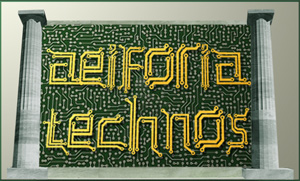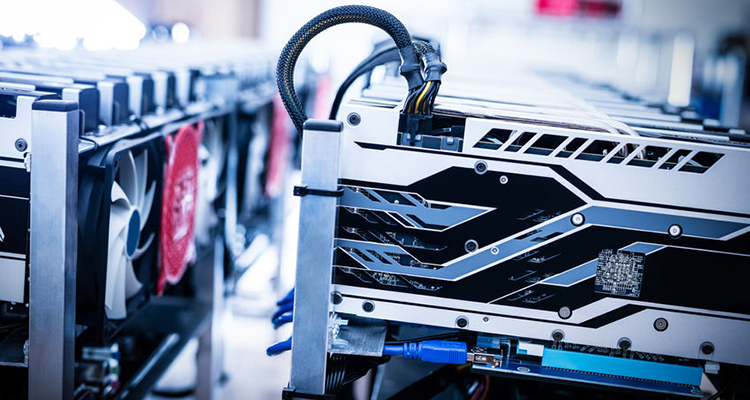Until Next Do You Part…
Planned obsolescence: It is a scourge many face when thinking about electronics  and technology. Most consumers view it as unethical that manufacturers would deliberately plan in deficits in feature sets or create ticking time bombs with their products just to make a buck. Unfortunately, it is a sad reality.
and technology. Most consumers view it as unethical that manufacturers would deliberately plan in deficits in feature sets or create ticking time bombs with their products just to make a buck. Unfortunately, it is a sad reality.
Apple, for instance, is currently embroiled in a legal challenge by Brazil over possibly withholding existing technology from its Gen 3 iPad in order to create a perceived need seven months later for the Gen 4 version. Samsung created television sets that have heat sensitive condensers right next to heat sinks, potentially shortening their lifespan. Cell phone manufacturers have been accused of creating products that last only 18 months knowing that the majority of contract holders are signed on for two years with their carriers. This failure causes them to “upgrade” early with the latest model.
What I find most interesting about this is that my father-in-law still has his 40 year old tube television (including spare tubes) that is still in fine working order. He recently purchased his first LCD television and I would put a steak dinner on it that the tube TV will outlast the new LCD. I personally have fallen victim to having my first-gen Motorola Droid smart phone being rendered obsolete because Motorola decided to conveniently stop making the battery 14 months into the phone’s life and the cost to replace it with one on Amazon was more than the purchase of a new phone through Verizon.
So other than draining our wallets and causing frustration, why would we care? Creating this revolving door of electronics also increases e-waste, which more than often finds its way to a landfill, not to mention perpetuates then need to continue to tear up our earth to find new materials to continue the cycle. For the small amount that actually is recycled, much of that winds up in third-world countries where, believe it or not, children stand over open flames to smelt the precious materials out while inhaling toxic fumes and spewing it into the atmosphere. So what are the consequences?
• Depletion of natural resources – The quicker we turn over electronics the more material is needed to replace it.
• Generation of waste – 75 percent of e-waste is dumped in a landfill not recycled, reused or repurposed.
• Drain on electricity and water resources – Manufacturing is a water and energy intensive industry so the more products we make means the more water and power we need.
• Lack of foresight – We humans is short sighted. We often don’t look beyond the immediate and the consequences of our actions. We have created this disposable lifestyle and the effort to overcome it is often perceived as hopeless.
To take a good look at a way around this in our technological industry, we can look to a stalwart of technology itself – Big Blue (aka IBM). Since 1999, IBM’s Global Asset Recover Services (GARS) division has remanufactured and de-manufactured 68 million pounds of technology – whether they made it or not – and of that technology 99 percent was recycled or reused. The GARS program pushes forward the ideal that you can design and manufacture products that last longer as well as have usefulness at the end-of-life. This includes developing products that can be continually upgraded rather than be a one-shot-pony. IBM believes in this so much that they actually use the remanufactured products themselves. They have proven to their clients that the products are just vibrant, robust and state-of-the-art and newly minted goods and they are able to do it in a cost effective manner which ultimately reduces the cost of goods to the customer.
Now there isn’t a utopian world where all devices are infinitely recyclable and reusable, but understanding what manufacturers can do to do better helps. In order to do this, you have to understand what is meant by designed obsolescence. First and foremost is the actual material the product is made from. How often have you purchased a product that was made in a third world country only to scream at the top of your lungs about how cheaply it was made as it disintegrated in your hands? Well using these materials with a planned shorter lifespan is a major way to make the product life-span shorter. It is understood that most often these materials are chosen as a cost saving measure to keep the price of manufacturing down and pass that savings on to the consumer – mostly due to those cheap third-world products flooding the market. There is some wisdom to this, but manufacturers need to do a better job at selecting materials that will last slightly longer than the user expects to be using the device. My previous cell phone example is a good one. Growing up, we had a wall-mounted phone that lasted for at least 20 years. I don’t expect a cell phone to last that long but it should last at least five to seven years, more than the renewal on my contract.
Backwards compatibility, or lack thereof, is another way manufacturers can create a need for the new product. We have already seen this in the AV industry with the analog sunset and video signals. It has cause mass panic among some users who are scared that their VCRs will no longer work on their new hi-def monitors, not to mention the lack of analog connectivity on new models creating a need to change older playback devices to be compatible with modern displays.
Creating expensive repair parts or consumables can force consumers to simply upgrade rather than fix. Printer ink… need I say more? These little ink boxes not only add up to way more than the cost of a printer, but also have their own environmental hazards.
My favorite is creating perceived obsolescence. This is where the product isn’t really the problem but the idea that if you don’t run out and get the latest version you will magically be transported off to the Island of Misfit Techno-Geeks. If you have an iPhone, I am looking at you.
With all of this said, companies are starting to realize that this sustainability thing isn’t just a fad, but is quickly becoming a way of life and means survival for us on this planet. Manufacturers have started to provide programs for product tack-back or offer recycling (most famous is Best Buy). These companies realize that the consumer control sales and having a good public image has become ever more important. There is also financial incentive for manufacturers who have realized that there are profits to be made through recycling efforts and other sustainable practices.
So what can we do to reduce the impact of planned obsolescence? Plenty: For starters, we can choose to specify, buy and install long-life products or products that have extended warranties and are guaranteed for a reasonable number of years. Buy the best quality products from reputable manufacturers you can afford. It is OK to support the small guys, but do your homework and don’t be afraid to call the manufacturer directly if you have questions. Buying cheap garbage will only give you what you deserve and you will usually pay for it twice if you have to replace things that break quickly. Get to know the materials that a product is made from especially where it counts. What are the failure points in your mind and do the materials at those points hold up well? Are the gears in a projector lift steel, brass or plastic?
Look for things made from recycled material or that can be recycled when it has reached its useful life. Have a plan in place for where and how to recycle it. Look for buy-back, take-back or manufacturer recycling programs as part of their service agreement. Look for backwards compatibility with future products and work with manufacturers that have that mindset as they design their products. Specify, buy and install products that can be repaired either by the user without breaking the bank or can be fixed by the manufacturer under an extended warranty. Buy second hand goods when possible rather than let it go to the trash heap. Use the product until it can’t be used anymore due to extended use not because the new shiny penny came out. It’s like driving on a good set of tires that you keep on the car until you can see the air inside. And the biggest way to extend that last tip is to actually take care of your stuff. Have it serviced regularly; keep it clean and out of dust and debris. Keep it in an environment free from moisture, heat and humidity and be kind to it. Don’t use it as a step stool or a hammer (even if Shure shows a video of a SM58 being used as one and still working).
There is often backlash from manufacturers stating that they clearly need to be competitive and keep costs down. They also want to sell products, otherwise they don’t make money — so it is in their interest to put profit over quality sometimes. As consumers, system designers and installers we have to put the dollars towards the most robust systems we can and manufacturers will hopefully come on board and build better products that way my LCD will outlast my father-in-law’s old TV.
Raymond Kent is the Managing Principal of Sustainable Technologies Group, LLC specializing in technology systems for the performing and cultural arts, healthcare, Government, higher education, and corporate markets. He is a co-author of the STEP rating system and serves as the chair of the Technology Task Force for the STEP Foundation. Raymond received the 2012 InfoComm Sustainable Technology Award and is involved with developing sustainable practices in the arts. Reach him at rkent@sustaintech-llc.com




